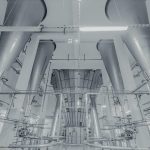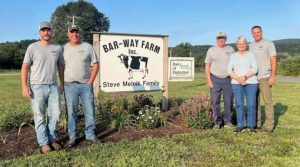
Five of the past six years have been financially challenging for dairy farmers, according to a trio of Wisconsin ag lenders. What was the best year moneywise for milk producers?
Sam Miller, managing director and group head of ag lending at BMO Harris Bank; Tim McTigue, senior vice president at Investors Community Bank; and Jim Moriarty, director of dairy lending and dairy consulting at Compeer Financial, agree that 2020 had its challenges, but it was a great year for dairy farmers when it came to income.
Big boost
“Last year fixed a lot of ills because of the repair that was done to balance sheets,” Miller said during a Professional Dairy Producers Dairy Signal webinar on Sept. 8. “Income, working capital, cash flow and equity all improved in 2020 because of a combination of better economics on the farm and government payments.
“That has helped heal a lot of the ills in the dairy industry,” he added. “I think some of the tools put in place through the Dairy Margin Protection Program and LGM [Livestock Gross Margin] Dairy helped to show the client, and therefore the bank, is managing the risk from the volatility that occurs inside the dairy industry. Dairy has a good reputation because the income comes in on a monthly basis — you’re not rolling the dice in the spring and planting a crop and hoping you get one in the fall. So, right now, we’re in a pretty good place.”
McTigue agreed with Miller. “Last year cured a lot of wounds that occurred over the past few years,” McTigue explained. “There were a lot of upgrades with most of our portfolio. Dairy farmers are very well-positioned for the future as compared to where they were in recent years.”
Moriarty said dairy farmers may want to look at rebalancing their loans to build up liquidity for the uncertainty ahead.
Invest carefully
“We have a number of farmers who put off reinvestment plans this year because construction costs were high,” Moriarty said. “So, I think this is an opportunity to build up some additional liquidity to prepare. It’s a good time to prepay some inputs at reasonable prices.”
Moriarty said as dairy farmers look at what to invest in, he recommends choosing things that will increase efficiency and productivity on the farm.
“Labor costs are going up, and that’s a fact of life — we just need to be able to work with our workforce to accomplish more,” Moriarty said. “Do we need more automation, or do we need to find ways to get cows through the parlor faster? Are there opportunities to work with the neighboring farm on some equipment purchases? Target those things that can increase productivity and efficiency, and lower our cost of production.”
Moriarty said common investments for his dairies with 200 to 500 cows are robotic milkers and automated feed pushers. On larger dairies, he said some of his farmers with rotary parlors are installing automated post-dip or pre-dip and prep units.
Miller said some farmers are investing in speed tubes on planters to get crops planted faster, while others are buying additional data-monitoring systems to improve herd health and help make decisions about what animals to keep.
“The big-ticket items are renewable natural gas projects and where do farmers fit in the whole carbon business,” Miller said.
McTigue is telling borrowers that now is a good time to lock in feed costs and purchase crop inputs for next year to help reduce costs and risk.
Miller acknowledged that uncertainty hasn’t been eliminated, and expenses right now are rising faster than revenue for a lot of producers.
“Margins are a challenge right now,” Miller said. “If you can automate something right now, those investments are being made because labor costs are becoming a bigger challenge. We’ve seen these periods before. The challenge for producers right now is to manage through these uncertainties.”
“Five years ago, if you wanted to add cows and you were financially able to do it, you did it,” he said. “Now, before you add cows, you have to be engaged with your milk processor and find out what you have to do to be a preferred supplier of choice.”

























